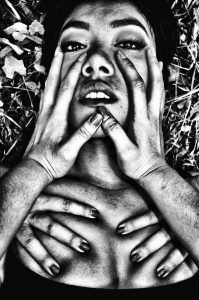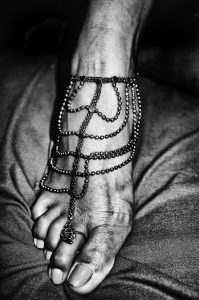Manila is a city of contrasts and diversity. Brian Sergio chose the harsh path that forced him to constantly think about himself in his quest. These photos are harsh at first glance, yet so fragile.
Is it possible to study photography at universities in the Philippines?
Yes. There are schools in the Philippines that teaches photography. But I’m not so sure if their resources are adequate enough. It’s not quite extensive as it should be. I guess the institutions here only sees the medium as just a form of documentation. I noticed most of photography students still seeks masterclasses from photography festivals abroad like Angkor Photo Fest in Cambodia or Oscura in Penang, Malaysia to name a few. While some seek mentorship from Senior local photographers. So I believe it’s much more effective for the up-and-comers to seek further help outside school premises. But what do I know, I never studied photography, everything I know, I just adopted from what I’ve learned from painting.
What led you to be a photographer?
I was always out to shoot random pictures back in my art school days, thinking that I may have a use for it as a reference for my painting. But every time I develop my shots I always ended up just printing them as is. So I told myself, ‘fuck it. I’ll just shoot pictures.’
Which authors inspire you and why?
As a kid, I like looking at the work of Vintage Penthouse magazine photographers just like any other teenagers with raging hormones. And for some reason, I never got over it. Then when I got older, I got introduced to the work of Nan Goldin, Larry Clark, and to further research on diaristic work, Araki popped out, and everything changed. I don’t know why, but I got obsessed with Japanese photography. before I knew it I was looking at works of Daido Moriyama, and the rest of the Provoke photographers. There is something about it that really blew my mind.
What’s your opinion on documentary photography in Asia?
It’s slowly getting noticed. More and more younger and capable photographers are out there showing their widely intensive work.
How do you select people which you photograph?
Not much of a selection. I just photograph people who made me laugh, who touched me emotionally, and sexually. People who are related to me. And most of all People I find deviant and peculiar.
Can you tell us about your book Pak! and its stand on Catholicism?
I began working on Pak! when I was just taking portraits of my friends in a peculiar and sexual context, then it expanded to friends of friends, and then other acquaintances. As i was working on editing my photographs, I became curious on why this seems very natural to them, they are calm and very composed that it’s like I’m just photographing a text-book portrait. And yet, some of them are still prude and very secretive about it. I got interested on how our minds are molded by our parents with their religious beliefs to this idea as early as when we were toddlers. Which is why we still have these inhibitions of either having disappointment from parents or people shaming us on the internet. I guess sex, fetishism, and nudity are still a stigma to a society of christian and catholic institutions. I am simply just exposing the obvious that drove into unintentionally provoking the minds of conservative Filipinos.
You’ve dealt with a very difficult theme which is fetish? Why?
It’s not a difficult theme for me. Fetishism is just a part of a lot of things in my peculiar environment, I practice kinbaku-bi almost regularly with like-minded people. So naturally, I just shoot what is already around me.
What does personal approach in photography mean to you?
Having a sincere unapologetic honesty, empathy, and love.
Why do you use high contrast in your work?
Simply put, I am partly color-blind. The colors of my sight are quite flat. So practically, high contrast black and white appeals to my vision aesthetically.
What does documentary photography mean to you in this current, rushed world?
It’s becoming more exposed and a lot more democratic, endless streams of information, and people with limited attention spans have become the norm nowadays. I guess mobile internet has a lot to do with it. But I’m not too keen about documentary photography since I don’t consider my work as one.
What is the reason for the relatively “harsh” title of your new book A Bastard Son?
I thought of the title A Bastard Son because I was toying around the idea of illegitimacy and disapproval in my pictures. Something that our society neglects to notice. And it reflects to how my voice as a photographer living in Manila which was pretty much condemned and ignored like a bastard son.
Brian Sergio (*1980) is a photographer, painter, and graphic designer. He studied painting at the University of the Philippines College of Fine Arts in 2002. Trained as a painter and a conceptual artist, he had a few local group exhibitions between 2000 to 2008 and worked as a Graphic Designer and Art Director in a couple of advertising firms, before deciding to focus on Photography full-time. His solo exhibitions as a photographer includes ‘Pak!’ (2014) at Galerie Astra, in Makati and ‘Kidultery’ (2011) at West Gallery in Quezon City, Philippines. Sergio’s work has often been described as raw, transgressive, and irreverent. His method has always been about energy and movement; taking a gamble, getting involved, and going with the flow without diffidence. In 2017, he released his 1st book called “Pak” published by Dienacht Publishing. The book was based on a collective rebellion against inhibitions and acceptable behavior, an attempt to expose the world behind the façade that most Filipinos aspire to. He currently released his 2nd book called A Bastard Son published by Zen Foto Gallery. Sergio currently lives and works in Manila, Philippines.
All photographs © Brian Sergio.













